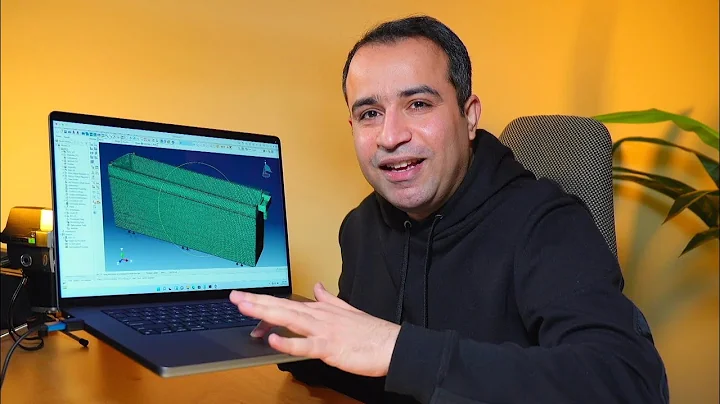Samsung's Groundbreaking Partnership with AMD: Revolutionizing GPU Technology
Table of Contents:
- Introduction
- Background on Samsung's Processors
- Samsung's Partnership with AMD
- Licensing and Intellectual Property
- AMD's Highly Scalable RDNA Graphics Architecture
- Benefits of the Samsung-AMD Partnership
- Enhanced Graphics Performance
- Reduced Power Consumption
- Potential for Gaming Capabilities
- Implications for the Mobile Technology Market
- Competition with Qualcomm
- Impact on ARM
- Speculation on Future Partnerships
- Conclusion
Introduction
Today, the tech world was taken by surprise with the announcement of a new partnership between Samsung and AMD. This unexpected deal involves AMD providing graphic technology for Samsung's smartphones, marking an exciting new venture for both companies. In this article, we will delve into the details of this partnership, exploring its background, potential benefits, and implications for the mobile technology market.
Background on Samsung's Processors
Currently, Samsung develops and uses its own range of processors for its smartphones, known as the Exynos range. These processors feature an ARM-based CPU and an ARM-based GPU. However, rumors have been circulating that Samsung has been considering developing its own GPU to enhance its processor lineup. Designing a GPU from scratch is no easy task, and many experts doubted Samsung's ability to create a competitive and efficient GPU. Despite these doubts, Samsung surprised the industry by partnering with AMD.
Samsung's Partnership with AMD
The newly announced partnership between Samsung and AMD signifies a major shift in Samsung's approach to GPU technology. Under this multi-year deal, AMD will license its intellectual property to Samsung, allowing the incorporation of AMD's GPU designs into Samsung's Exynos processors. Unlike traditional chip manufacturing, where a chip is produced and then sold, this partnership will focus on sharing designs rather than physical production. AMD will receive license fees and royalties from Samsung for the use of its intellectual property.
Licensing and Intellectual Property
By licensing AMD's technology, Samsung will benefit from the highly scalable RDNA graphics architecture. This architecture, which was recently announced by AMD at Computex, offers flexibility and scalability, making it suitable for a wide range of devices. The RDNA architecture utilizes compute units based on 64 shaders, allowing for efficient scaling both up and down in terms of performance and power consumption. This scalability is particularly important for mobile devices like smartphones, where power efficiency is a crucial factor.
AMD's Highly Scalable RDNA Graphics Architecture
The RDNA graphics architecture, developed by AMD, is a significant player in the partnership between Samsung and AMD. Offering a highly scalable design, RDNA can provide performance from low to high ends of the spectrum. This scalability is achieved through its utilization of compute units, each consisting of 64 shaders. With this architecture, Samsung can tailor the number of shaders to fit the specific requirements of its Exynos processors, ranging from mid-range to high-end devices. By reducing the number of shaders, power consumption can also be minimized, ensuring that the GPUs are efficient in battery-operated handheld devices.
Benefits of the Samsung-AMD Partnership
The partnership between Samsung and AMD holds several potential benefits for both companies and the mobile technology market as a whole.
-
Enhanced Graphics Performance: By incorporating AMD's RDNA-based GPUs into its Exynos processors, Samsung can offer smartphones with improved graphics processing capabilities. This enhancement will greatly benefit gamers and users who rely on graphically intensive applications.
-
Reduced Power Consumption: AMD's RDNA architecture, with its scalable design, allows for the optimization of power consumption in Samsung's Exynos processors. By tailoring the number of shaders to the specific device's requirements, Samsung can strike a balance between performance and power efficiency.
-
Potential for Gaming Capabilities: With the integration of AMD's GPUs, Samsung's smartphones may see an improvement in gaming capabilities. This partnership puts Samsung in a better position to compete with Qualcomm, a dominant player in the mobile gaming industry.
Implications for the Mobile Technology Market
The partnership between Samsung and AMD is anticipated to shake up the mobile technology market, with several implications worth considering.
-
Competition with Qualcomm: As Samsung strengthens its GPU technology capabilities through AMD's partnership, it poses a significant challenge to Qualcomm, the current leader in mobile GPU technology. With the potential for enhanced gaming capabilities, Samsung could compete more aggressively with Qualcomm's Adreno GPUs.
-
Impact on ARM: Samsung's decision to collaborate with AMD raises questions about the future of its partnership with ARM. As Samsung has been using ARM's Mali GPUs in its processors, it remains uncertain how this new deal will affect their existing relationship.
-
Speculation on Future Partnerships: The announcement of Samsung's collaboration with AMD opens the door to speculation about potential future partnerships. Will other major players in the industry, such as Apple or Huawei, consider similar alliances to bolster their GPU technology capabilities?
Conclusion
In conclusion, the partnership between Samsung and AMD marks an exciting development for the mobile technology market. With AMD's RDNA graphics architecture incorporated into Samsung's Exynos processors, we can anticipate improved graphics performance and reduced power consumption in Samsung's future smartphones. This partnership also has wider implications for the market, raising questions about competition with Qualcomm and the future of ARM's partnership with Samsung. As technology continues to evolve rapidly, it will be fascinating to witness the impact of this collaboration on the mobile tech landscape.
Highlights:
- Samsung partners with AMD to enhance GPU technology in its smartphones
- AMD's highly scalable RDNA graphics architecture offers improved graphics performance and power efficiency
- The partnership leads to potential competition with Qualcomm and raises questions about the future of Samsung's partnership with ARM
FAQ
Q: Will this partnership improve gaming capabilities on Samsung smartphones?
A: Yes, the integration of AMD's GPUs into Samsung's smartphones has the potential to enhance gaming capabilities, offering improved graphics performance.
Q: How will this partnership impact Samsung's existing partnership with ARM?
A: The partnership between Samsung and AMD raises questions about the future of Samsung's collaboration with ARM, particularly in terms of GPU technology.
Q: What benefits does AMD's RDNA graphics architecture offer?
A: AMD's RDNA architecture provides a highly scalable design, allowing for optimized power consumption and improved graphics performance in handheld devices such as smartphones.
Q: How will this partnership affect competition with Qualcomm?
A: By incorporating AMD's RDNA-based GPUs, Samsung will be better equipped to compete with Qualcomm, a dominant player in the mobile GPU technology market.


 < 5K
< 5K
 13
13


 10.6K
10.6K
 13.52%
13.52%
 14
14


 45.7K
45.7K
 16.2%
16.2%
 45
45


 43.1K
43.1K
 17.49%
17.49%
 24
24
 WHY YOU SHOULD CHOOSE TOOLIFY
WHY YOU SHOULD CHOOSE TOOLIFY



































